It’s birdwatching season: Get your binoculars and field guides ready
Physiotherapist Pallavi Shivalkar’s (38) six-year-old daughter is fascinated by birds. She literally points at anything with wings. Appropriately inquisitive for her age, she demands to know what the birds are, and where they are from. “Birds, as far as I was concerned, had always been crows, pigeons and the occasional parrot,” says Shivalkar. But to encourage her daughter, she started taking a keen interest in birds herself, not just the common sort, but the exotic ones as well. So, this year, she went on a bird-spotting tour, to the Tadoba Andhari Tiger Reserve in Chandrapur, Maharashtra.
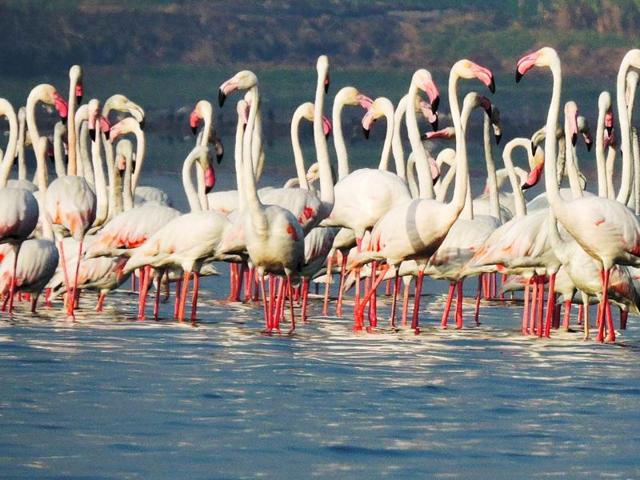
If she hadn’t already fallen in love with birds, what she saw here transformed her. “I spotted an Indian Roller, with its turquoise crown and wings [note: the Roller isn’t migratory, but displays seasonal movement]. It was holding something slithering in its beak. It was a live scorpion, which it thrashed against a tree until it died,” says Shivalkar. A rather morbid thing to get excited over, you might think And it might be a good thing the six-year-old daughter wasn’t with her; it might have changed her idea of birds prematurely. But Shivalkar witnessed nature, at its very primal. And it is this joy of seeing nature’s prettiest creations, and of witnessing the cycle of life away from our concrete jungles, that drives birdwatchers.
Each year, globally, an estimated 50,000 million birds travel to breed and find nesting grounds during extreme winters. In India, out of the 1,400 species you can spot, a third is migratory (according to the Bombay Natural History Society, or the BNHS).
Mumbai, specifically — despite the losing battle of its green cover against concrete — is still witness to a large number of migratory wetland birds from northern Asia and Europe. The reason for that is the year-long tropical climate and humidity, a welcome winter vacation for the birds from frozen countries. The city’s vast, albeit diminishing, marshlands — in Sewri and Bhandup — and the Konkan coastline are home to wintering wetland birds.
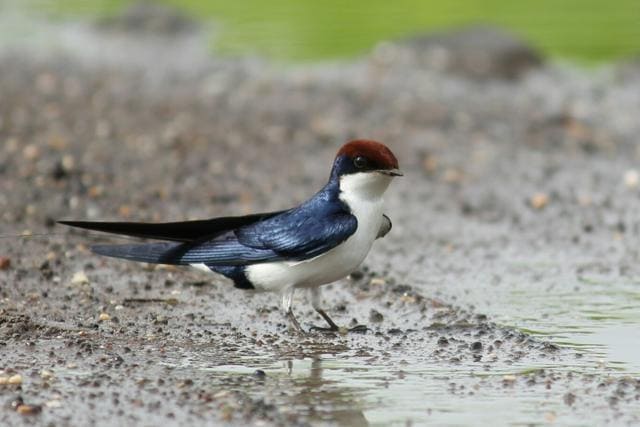
Take-off
With their holiday plans immune to recession and loss of jobs, the birds have been undertaking these trips for an eternity now. Naturally, the hobby of observing them in their natural habitat isn’t entirely novel. Documentation of migratory birds can even be traced back to our mythological epics. The scriptures have often associated identification of weather change with the spotting of certain birds. For instance, the Chatak — a black and white crested bird — has been referred to in the Vedas as the one who waits all year long to quench its thirst with the first rain. The bird is now known to be the Pied Cuckoo, a partial migrant that travels to the city pre-monsoon, for mating. His sighting, therefore, is considered to mark the advent of monsoon in Mumbai.
Traditional birdwatching and documentation practices transformed into an organised activity when the British came to India in the late 1700s. “They showed a keen interest in systematically documenting the natural diversity of India. It was they who also established the BNHS for this cause,” says Dr Shrirang Bakhale, a Chembur resident and an avid birdwatcher.
It was in 1883 that the BNHS was founded by eight amateur naturalists and ornithologists. The intention was to document local fauna to provide scientific backing to conservation efforts. The 132-year-old organisation has since played a key role in encouraging people across professions and ages to take up birdwatching. “Anybody can become a birdwatcher. All it requires is patience and focus. You don’t even need to venture out of your home always. I have seen 42 species from my balcony in suburban Mumbai,” says Atul Sathe, manager-communications for the BNHS.
They also organise weekly nature trails and outdoor camps (see box). These tours are open to all, irrespective of prior expertise. And they are led by professional birders who provide hands-on information. Participants are often found returning for these tours or even undertaking solo trips to birding destinations (see box). “The more you involve yourself, the more you begin to understand its importance in the current environmental crisis,” says Sathe.

The bigger picture
Global climate change poses a massive threat to the migratory bird population that visits Mumbai. Apart from shrinking wetlands and forested areas, rising temperatures also discourage birds that migrate to the city for its pleasant December climate. “Eventually the birds will skip Mumbai and travel further south in search of wintering wetlands,” fears Sathe. Mumbai has lost nearly three to four percent of its local forest bird population because of the rampant chopping of trees. The Hawk Cuckoo, for instance, has gradually disappeared from the city. “The Cuckoo breeds in nests of other tree dwellers such as a crows. As the number of trees reduced, crows adapted to building nests on concrete. The Cuckoo receded to the forest cover in Sanjay Gandhi National Park,” Sathe adds.
But is the future unalterably bleak for birds in the city? Bakhle cites the example of Maharashtra Nature Park, Dharavi, and says we need more projects like that. An erstwhile dumping ground, it is today a green lung. “Nearly 30 to 40 species of birds visit the park now, including the Oriental Magpie Robin and the Red Vented Bul Bul,” Bakhle says.
He also says that environmental conservation is an individual responsibility: “Hanging a bird feeder outside your window, putting out a dish of water, fruit seeds or grains also makes a difference. It is one of the easiest ways to open your doors for various species of birds.”
Follow this guide to identify birds around the city
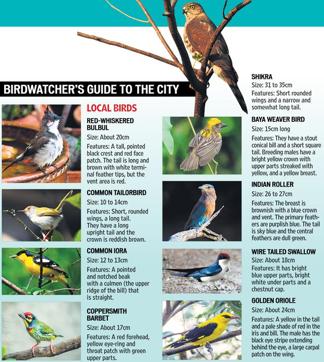
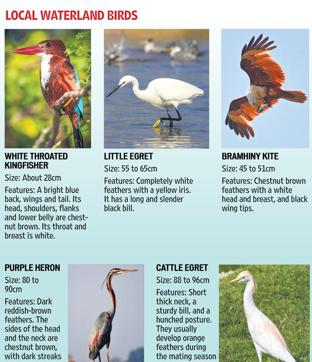
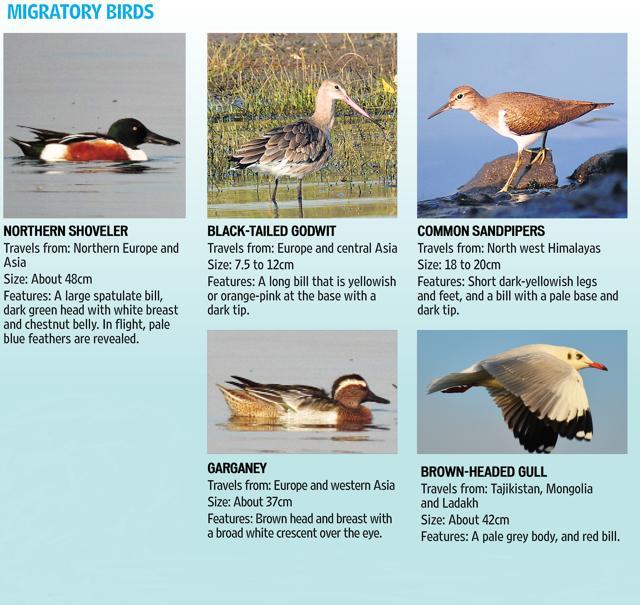
Upcoming trails
Nature trail on December 6: Catch an eclectic mix of water birds and forest birds such as the Indian roller and grey Hornbill among others at Bhandup Pumping Staion, otherwise known for its rich biodiversity.
Where: Assemble at Nahur station
Cost: Rs 200 per head
Call: 86920 22777
When: 6.30am (assembly time)
Uran nature trail on December 20: Catch both waders and raptor birds along with a mixture of grassland birds such as Shorteared Owl at this birding destination near Mumbai. The trail will also include a talk that will enable participants to identify the birds on the trail.
Where: Assemble at Dadar station. Private transport towards Uran will be provided.
Cost: Rs 300 per head
Register at: mumbaitravellers@gmail.com
When: 6am (assembly time)
Sewri Wader watch on December 13: Go on a trail to spot the wintering wetland birds such as Sand Plover, Sandpiper and Little Stint.
Where: Assemble at Sewri railway station
Cost: Rs 150 onward
Email: bnhs.programmes@gmail.com
When: 7.30am (assembly time)
Birding at Karnala Base Forest on December 27: Enjoy the moist deciduous forest, filled with different kinds of Woodpeckers, Sunbirds, Crested Hawk eagle and Drongos.
Where: Assemble at Dadar TT bus stand
Cost: Rs 800 onward
Call: 2287 1202
When: 6am (assembly time)


Places to spot birds in and around Mumbai
* Shilonda Trail at Sanjay Gandhi National Park (SGNP): This park is located at Borivali (East) connected to Western Express Highway in Mumbai.
* Maharashtra Nature Park: Also called Mahim Nature Park it is located in the heart of concrete city Mumbai, near Sion Dharavi road.
* Karnala Bird Sanctuary: Located 50 to 60 km near Mumbai, Karnala is a special bird sanctuary by the Konkan coast in Raigad district.
* Tungareshwar at Vasai: Located on the Western Express Highway it is to the north of Mumbai near Vasai road.
* Sewri: Located in the middle of Mumbai, it is special for Flamingos seen in this vast five acres flat mud land.
* Colaba’s Sagar Upvan: Also known as Mumbai Port Trust, this Botanical garden at Colaba is also a safe haven for local forest birds.
Catch your daily dose of Fashion, Taylor Swift, Health, Festivals, Travel, Relationship, Recipe and all the other Latest Lifestyle News on Hindustan Times Website and APPs.
Catch your daily dose of Fashion, Taylor Swift, Health, Festivals, Travel, Relationship, Recipe and all the other Latest Lifestyle News on Hindustan Times Website and APPs.





